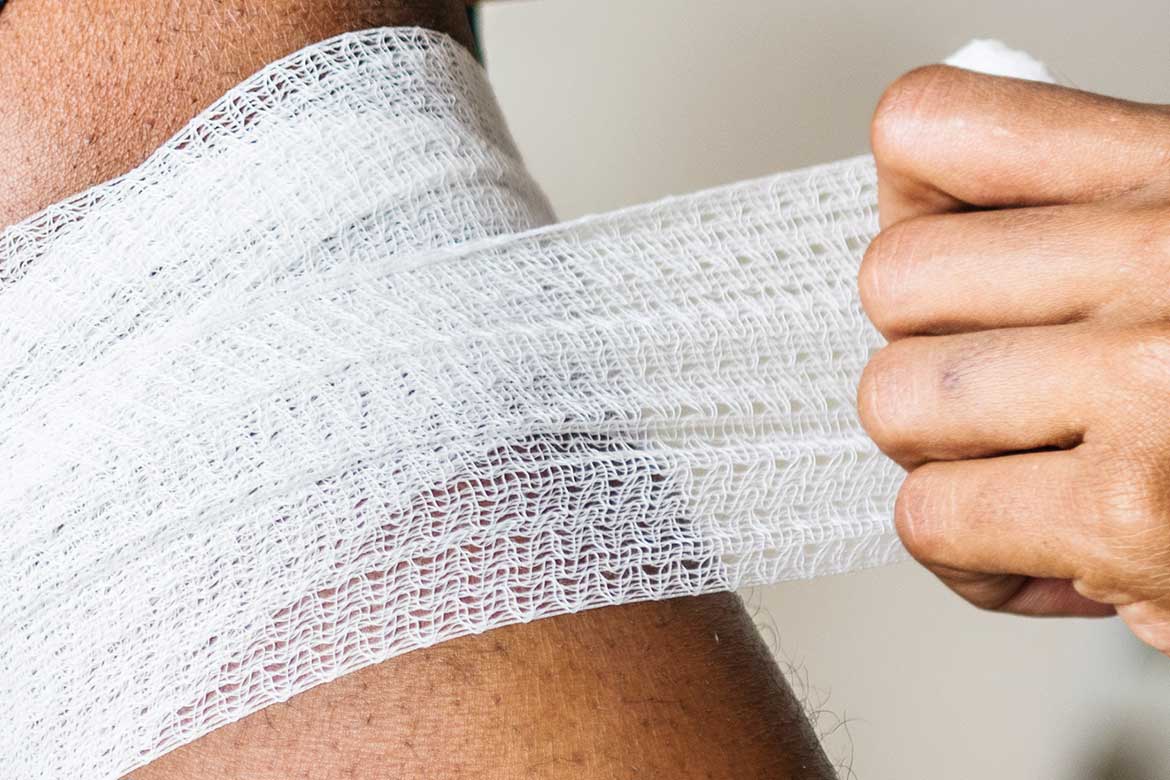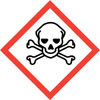29th June, 2023
The Difference Between Hazard And Risk Explained
What is the difference between a hazard and a risk? If you carry out a risk assessment, you need to identify the hazards before you can assess the risks. But these two terms are often confused with each other. In this blog post, we explain the difference between hazard and risk.

When you carry out a risk assessment, one of the first steps you will need to take is to identify the hazards. After this, you can assess the risks. But what is the difference between a hazard and a risk?
These two terms are often confused with each other, so if you're wondering what the difference is - you are not alone.
The two terms go hand in hand. Without a hazard, there is no risk. But they are different, a hazard is something that could harm you, and a risk is the chance of that harm actually happening.
Understanding the difference between a hazard and a risk is an important part of risk assessment. So let's look at what makes hazards and risks different, and how they are connected.
What is a hazard?
A hazard is something with the potential to cause harm. A hazard has the potential to cause death, injury, damage or other loss.
A hazard could be a substance, machine, activity, method of work or process. Hazards are found in nearly every workplace, home and any environment. At work, we need to identify hazards when we are carrying out a risk assessment, which is a legal requirement.
Want some more examples of hazards? Here are 45 hazard examples you can find in your workplace.
For example, a hazard could be a forklift truck. It has the potential to cause harm, to those using it, and to those working around it. Before we look at the risk associated with this hazard, let's talk about what a risk is.

What is a risk?
A risk is the chance that somebody could be harmed by the hazard. A risk calculates how likely it is that someone will be hurt, and how severely.
The risk is assessed based on the severity of the harm and the likelihood of harm occurring. A risk may be high or low taking into account these two factors.
Likelihood x Severity = Risk
The risk level is a calculation of likelihood and severity. You will often see a risk matrix when looking at how a risk assessment has been carried out... like this:
| Slight | Moderate | Extreme | |
| Low | Very Low Risk | Low Risk | Medium Risk |
| Medium | Low Risk | Medium Risk | High Risk |
| High | Medium Risk | High Risk | Intolerable Risk |
The severity of harm could range from minor short-term harm to major life-changing injuries or death. The likelihood of harm occurring from the hazard could range from very unlikely to highly likely.
If you need help calculating risk, you can use our free risk assessment calculator tool, and develop your risk register.

The difference between hazard and risk
A hazard is something with the potential to cause harm. The risk is the chance of that harm occurring.
A hazard can generate various risks, as it may have the potential to cause harm in several ways.
Hazards are not risks themselves, but they create risks. If you have stairs, they are a hazard.
You can't reduce the hazard - removing the stairs isn't possible and would create another problem (no way up or down!). But you can reduce the risk - handrails, non-slip treads, suitable flooring, removing trip hazards etc.
The stairs are a hazard. The risk is that someone could fall.
Let's take a look at a couple more examples to get more familiar with hazards and risks.
Example 1 - Forklift Truck
In our earlier hazard example, we used a forklift truck. Now let's look at the risks. There are several ways harm could occur from the use of a forklift truck, including:
- Contact with pedestrians
- Overturning
- Contact with other vehicles or machines
- Dropping the load
- Unauthorised use
Let's look at the first item on our list, contact with pedestrians, and calculate the risk level. Remember, when calculating risk, we consider likelihood x severity.
How likely is it you wouldn't hear a forklift truck coming and get out of the way? Well, it could be quite likely, especially if you were in a noisy work environment and concentrating on your own job. The driver might not see you either if they are carrying a large load.
And contact with pedestrians could be pretty severe. I wouldn't fancy being run over by a forklift, they weigh more than double a car. It's easy to see how that could seriously injure you or even be fatal.
So it sounds like our risk level is pretty high. But what about our control measures? What if all pedestrians had to wear hi-viz to make them more visible to drivers? What if we had physical barriers preventing access between pedestrians and traffic routes, only at designated crossing points that were marked and had a traffic light system? Well, that reduces the likelihood of contact right down. And therefore, the risk level is reduced.
In this example, the forklift is our hazard. And with the controls in place, the risk of harm to pedestrians from forklift use is low.
Hazard: Forklift Truck
Risk: Contact with pedestrians (Low)
Example 2 - Toxic Substance
Let's take another hazard for example. A toxic substance in the workplace would be a hazard. It could be classified as a highly hazardous substance. And it certainly fits the definition of a hazard, something with the potential to cause harm.

And what about the risks? Well if a worker accidentally ingested the substance, since it's toxic, it could make them seriously ill. Or worse, kill them. And those toxic properties can also pass through the skin, or be inhaled. Yikes!
- Accidental ingestion
- Skin contact
- Inhalation
The inherent risk is high because an untrained person accessing this substance could do some real damage to themselves.
However, the risk can be controlled, by implementing management procedures. Remember, the risk is based on likelihood and severity.
The severity could be reduced, for example by only allowing a very small amount of the substance to be accessed, so that even if an employee was exposed, the quantity would be so small that the effects would be limited.
The likelihood of harmful exposure could also be reduced, by collective protective measures, like the installation of ventilation and exclusion zones, and personal protection, like the enforcement of wearing personal respiration equipment (RPE).
Hazard: Toxic Substance
Risk: Inhalation (Medium)
The risk here is still a little higher than we would like - it's such a high-risk substance, we can't really reduce the severity should contact occur, so some extra monitoring and supervision will be necessary.
Remember: Likelihood x Severity = Risk
We've done what we reasonably can to reduce the likelihood of harm - but let's plan to start looking for an alternative safer substance for this task. Then we will reduce the severity of any exposure and lower the risk further.

To reduce the risk of skin contact and ingestion, the substance could be kept in locked secure storage, in a clearly labelled container, with only authorised access. And those using the substance are trained in safe handling and use and must wear gloves and follow procedures for decontamination and disposal of PPE.
Hazard: Harmful Substance
Risk: Skin contact (Low)
Risk: Accidental ingestion (Low)
Summary
So you should now know what a hazard is (something with the potential to cause harm) and what a risk is (the chance that somebody could be harmed by the hazard). It is important to distinguish between hazard and risk.
Activities may have many hazards, but the level of risk can be reduced by good management and controls. In fact, the whole purpose of risk assessments is to control risks so that work can be carried out safely.
A combination of control measures can significantly reduce the risk level, ensuring that something with the potential to cause harm (the hazard) is not able to actually cause harm or that the harm is minimised (the risk).
Often a task may be classified as high risk when it is, in fact, high hazard. Just because a task or activity involves hazards, doesn't mean it is high risk. Hazardous work can be made safe providing that each risk is controlled so that the work can be carried without harm. The hazard is still there, but the risk is controlled.
Where you can eliminate hazards, you can remove the risk. In circumstances where hazards cannot be removed, they can be controlled and the risks reduced. By identifying hazards, and the risks associated with them, you can put in place control measures and careful management, so that the remaining (residual) risk is low.
Need help completing your risk assessments? Start with the free risk assessment template or find a risk assessment for your activity.
This article was written by Emma at HASpod. Emma has over 10 years experience in health and safety and BSc (Hons) Construction Management. She is NEBOSH qualified and Tech IOSH.
Better health and safety...
We are here to help you and your business put safety in everything.
Learn MoreRecent posts like this...

Key Duties Of The Health And Safety At Work Act For Your Business
The Health and Safety at Work etc. Act is an enabling act. It sets out the general health and safety duties that all businesses have to comply with in the UK. It enables further, more specific, health and safety regulations to be passed by law and enforced under it.
Read Post
The Hidden Cost Of Accidents At Work
In the UK, someone is killed at a workplace almost every working day. Hundreds of thousands of workers are injured each year. The cost of these accidents at work isn't always obvious. Many costs are indirect, and the direct costs are just the tip of the iceberg. In this post, we will look at the hidden cost of accidents at work.
Read Post
10 Health & Safety Myths And The Truth Behind Them
Health and safety sometimes gets a bad name. It seems like more and more strict rules are put in place each year. But is this the truth, or are these health and safety myths? In this blog post, we take a look at some health and safety headlines and try to separate fact from fiction.
Read Post